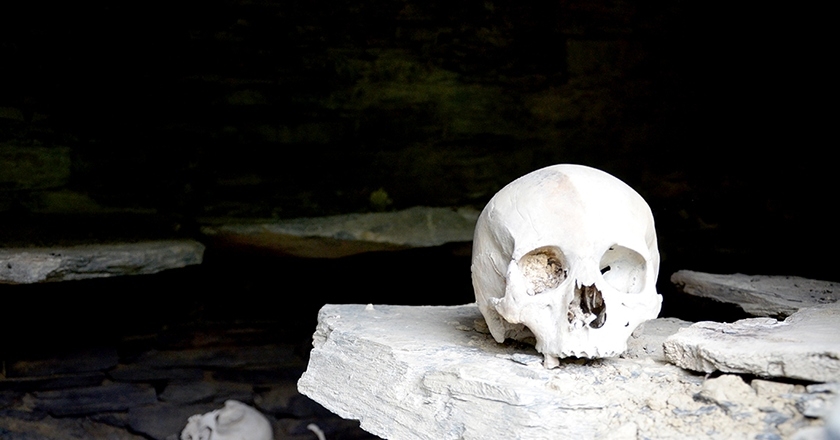According to the legend, an infection locals called “Zhami” infected locals, leaving no healthy people to bury the dead. Therefore ill people would go to the burial vault, throw deceased bodies from shelves, and lay in their place to meet the death.
Across the vault walls, shale shelves are lined up in three layers. The archeological expedition found woodenware, jewelry, arrowheads, and coins. Dozens of people were buried there; bones of previously buried gathered below the down most shelves.
This type of self burial is probably unknown to humankind. However, burials in vaults remained in Shatili until the XX century.
Anatori Cross is a shrine situated on the north slope of the Caucasus Range. According to the legend, a man shot an arrow at the shrine. Angered, it punished the village and killed 60 men with illness.
Another legend suggests that a local blacksmith hammered a golden nail into the icon, causing it to punish the village. In Anatori, the alcove for the icon is considered a holy place.
Anatori is situated at the crossroad of two gorges. Roads from Chechnya, Dagestan, Tusheti, Kartl-Kakheti converge there.
ანატორი – აკლდამებში ამოწყვეტილი სოფელი ანატორი – აკლდამებში ამოწყვეტილი სოფელი ანატორი – აკლდამებში ამოწყვეტილი სოფელი ანატორი – აკლდამებში ამოწყვეტილი სოფელი ანატორი – აკლდამებში ამოწყვეტილი სოფელი ანატორი – აკლდამებში ამოწყვეტილი სოფელი












